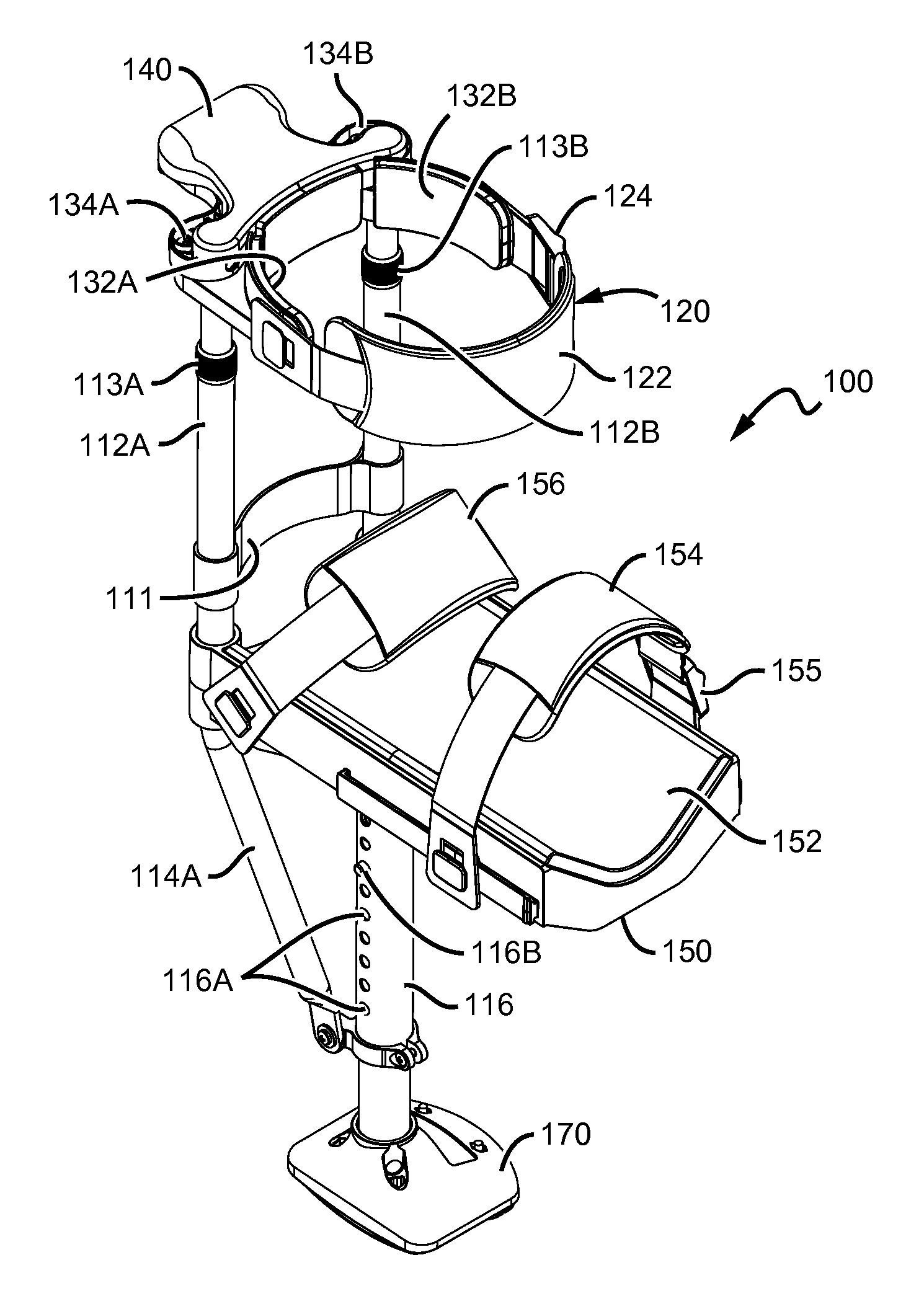Hands-free crutch
a hands-free, crutch technology, applied in the field of crutches, can solve the problems of difficult use of all other known hands-free crutches
- Summary
- Abstract
- Description
- Claims
- Application Information
AI Technical Summary
Benefits of technology
Problems solved by technology
Method used
Image
Examples
Embodiment Construction
[0031]The prior art failed to appreciate a critical feature of crutches; that when used by the average person, weight passing through the supported leg will generally be directed off vertical. The current inventor took that one step further, recognizing that the foot (or feet) of a crutch should therefore have a medial contact region that is raised relative to a lateral contact region when weight is being transmitted vertically to the ground or other horizontal surface. These distinctions are readily apparent by viewing FIGS. 1A-3B.
[0032]In FIG. 1A a flat-bottomed foot 12 of a lower portion of hands-free crutch 10, is pushing against the ground 5. The weight of a user (not shown) is being transmitted vertically through a post 11 to the ground 5 as shown by force line 14A. Assuming this crutch is being used on a right leg, then viewed from the rear there is a medial contact region 12M on the left and a lateral contact region 12L on the right, coupled together to form a single pad. Me...
PUM
 Login to View More
Login to View More Abstract
Description
Claims
Application Information
 Login to View More
Login to View More - R&D
- Intellectual Property
- Life Sciences
- Materials
- Tech Scout
- Unparalleled Data Quality
- Higher Quality Content
- 60% Fewer Hallucinations
Browse by: Latest US Patents, China's latest patents, Technical Efficacy Thesaurus, Application Domain, Technology Topic, Popular Technical Reports.
© 2025 PatSnap. All rights reserved.Legal|Privacy policy|Modern Slavery Act Transparency Statement|Sitemap|About US| Contact US: help@patsnap.com



